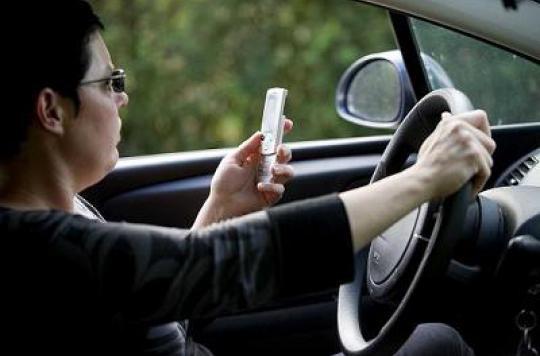Women are safer behind the wheel than men, several studies have shown. An AXA Prévention survey reminds us that they are not, however, model drivers.

Woman at the wheel, death at the turn. Several studies have shown that the expression is cliché. But female drivers are far from the model of virtue that we imagine. A study ofAXA Prevention, published this Thursday, October 10, shows that they have good reflexes often accompanied by bad habits … just like men!
Alcohol and fatigue: more careful, but not perfect
French women are particularly attentive to the dangers of drinking and driving. 8 out of 10 consider it dangerous to drive after having had 2 drinks. The majority also say that awareness of the effects of alcohol on driving is a priority. In fact, they remain cautious. Only one in five women gets behind the wheel after two drinks. Beyond four drinks, they are only 2% to do so. It is overall better than men.
The same goes for the fatigue-driving combination. The drivers recognize that the practice is risky. But more than one in two women drive tired and a quarter of them don’t take regular breaks. The AXA Prévention study nevertheless concludes that women perceive dangers better than men and are generally more cautious.
Speed: such risky driving
Four in ten women do not feel safe on the road. It is twice as much as men. This does not prevent them from being as disrespectful of speed limits as the men. More than 40% of them drive above 65 km / h in town. Women aged 25 to 34 are by far the least careful: a large majority drive too fast. Those from 50 to 64 are more attentive to the respect of the highway code: only a quarter commits speeding tickets. On the motorway, young people are also the least respectful of speed limits, even if less than 20% of drivers drive above 130 km / h.
Driving in the city: women take more risks
Female drivers take more risk in the city. More than ¾ of the women questioned admit not stopping at an amber light. This puts them on an equal footing with men. They are also more likely to slalom between the lines when the traffic is heavy. Eight out of ten women say they do, even though the code forbids it. Men are more tempered on this aspect.
The women reveal all their paradox concerning the use of the telephone while driving. They are more likely than men to point out the danger of such a practice. In effect, they apply the precept “Do what I say, not what I do.” »They consult their SMS more often and reply to them more than men (21% against 15%). On the other hand, they call less than their male counterparts.
Caution and safety
Women are more protective than men, according to the results of the AXA Prevention survey. Almost nine in ten women prescribe behavior advice on the road. They are also half of asking their loved ones to avoid taking risks. Drivers are also a majority to advise good behavior. In fact, advice is rarely applied by those who give it, men or women.
The balance is still tipping in favor of women. At equivalent mileage, women are less involved in road accidents. They represent only 18% of people causing fatal accidents, and 26% of drivers causing non-fatal accidents. This time, the two sexes seem to agree: six in ten women think they cause fewer accidents than men. 40% of men share this opinion.
.

















